Rogue Valley Travel Impacts 2022
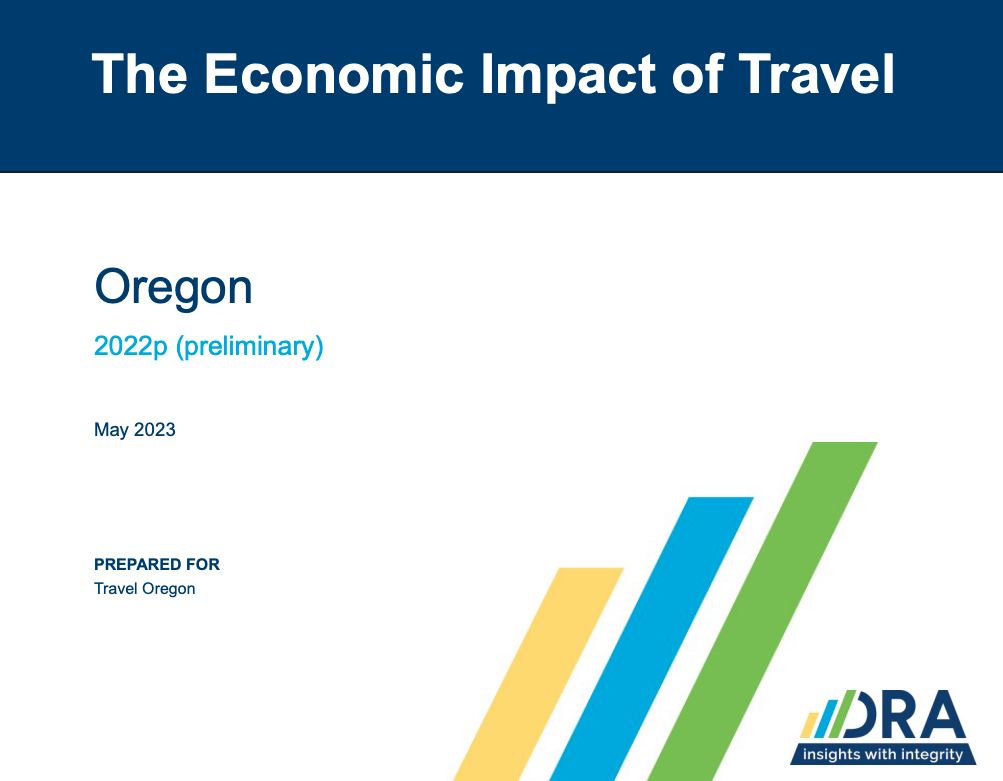
Preliminary data for 2022 from a Dean Runyan Associates study for the Oregon Tourism Commission shows that total direct travel spending in Oregon rose 23.2% in 2022 compared with the 2021 figure. Travel spending rose from $11.0 billion in 2021 to $13.9 billion in 2022 and was $1.1 billion above the pre-pandemic 2019 level. Travel spending and earnings showed stronger recoveries than travel-related employment, which by 2022 remained an estimated 1,110 jobs below the 2019 total.
In Jackson County, travel spending recovered from a low of $363.9 million during the pandemic in 2020 to $626.0 million in 2021. In 2022, spending increased to $727.8 million, a gain of 16.3%. Food service ($170.8 million) and accommodations ($135.3 million) combined to account for just less than one-half of travel spending in Jackson County last year. Local transportation and gas ($77.6 million); retail sales ($70 million); food store spending ($55.1 million); and arts, entertainment and recreation ($48.2 million) made up the majority of the rest of Jackson County travel spending in 2022.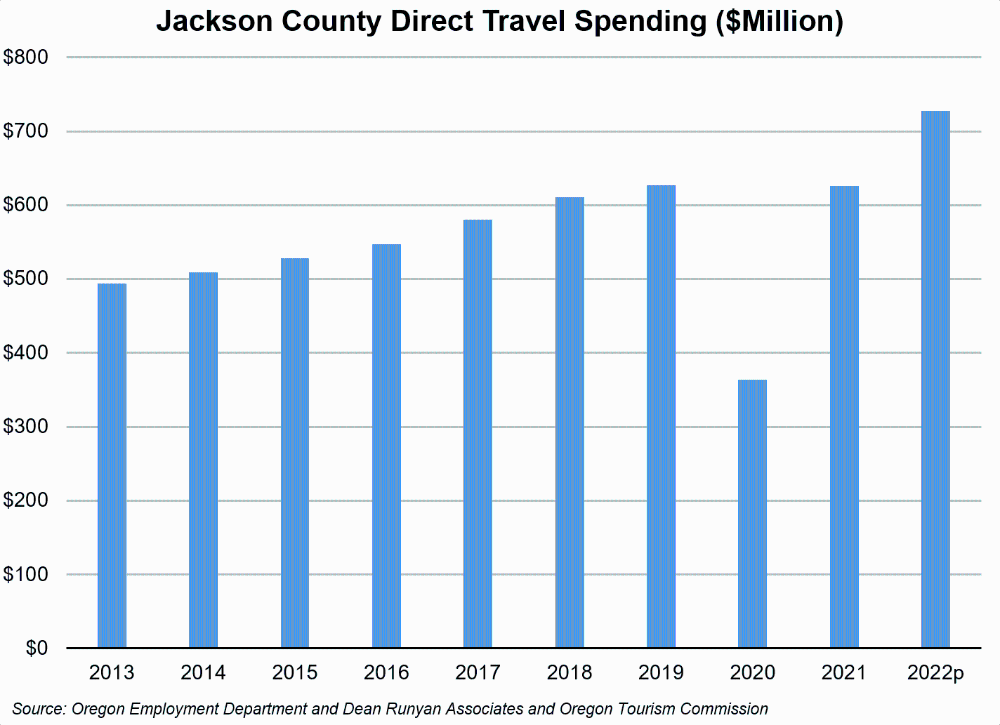
Travel spending rose from $80.6 million in 2020 to $171.5 million by 2022 in Josephine County, accounting for 1.3% of all Oregon travel spending. Food service ($48.1 million) and accommodations ($36 million) combined to account for one-half of travel spending in Josephine County last year. Retail sales ($21.4 million); food store spending ($18.0 million); local transportation and gas ($18.1 million); and arts, entertainment and recreation ($14.3 million) made up the majority of the rest of Josephine County travel spending in 2022. Direct travel spending in 2022 was $30.1 million more than 2019 pre-pandemic total in Josephine County according to these preliminary estimates.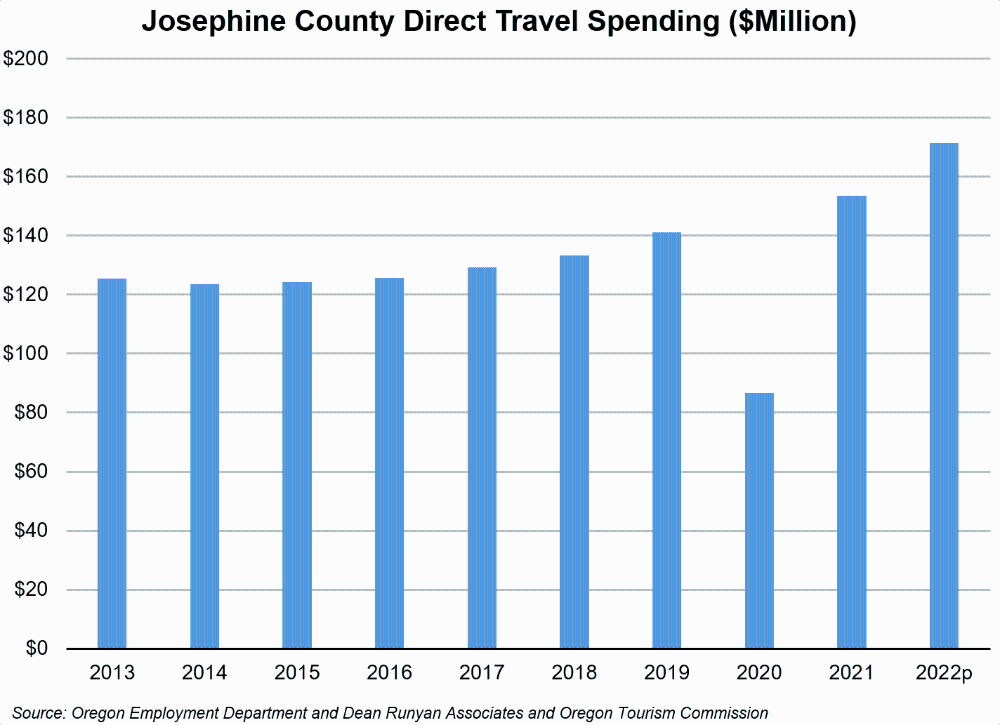
Employment attributed to travel spending was estimated at 5,700 jobs in 2022, up 16.3% from the prior year in Jackson County. After losing an estimated 1,040 jobs during the pandemic in 2020, the county had regained all but about 100 of the travel-generated jobs lost during the pandemic by 2022. Industry employment generated by travel spending had a similar distribution as overall travel spending by industry. About 70% of all travel-generated employment was in the accommodations and food services industry. Approximately one out of eight travel-generated jobs were in the arts, entertainment and recreation industry, and 10% were in the retail trade sector.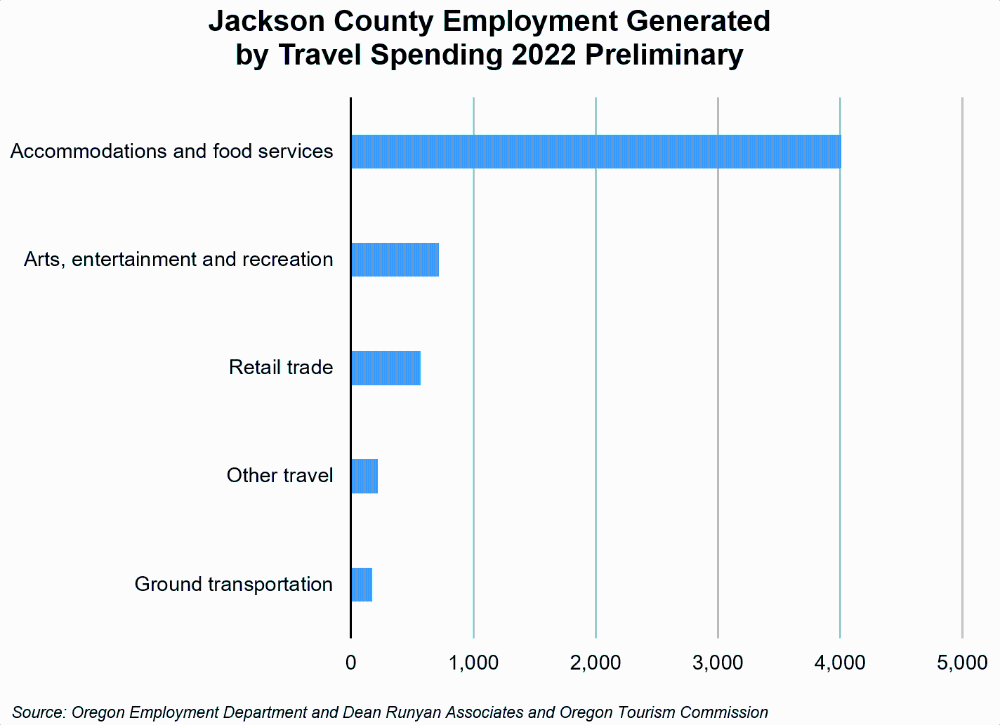
Employment attributed to travel spending was estimated to be 2,230 jobs in Josephine County in 2022, up 14.9% from the prior year. After losing an estimated 230 jobs during the pandemic in 2020, the county regained those jobs and is 200 jobs above the 2019 pre-pandemic total. Industry employment generated by travel spending had a similar distribution as overall travel spending by industry. About two-thirds of all travel-generated employment was in the accommodations and food services industry. Approximately one out of five travel-generated jobs were in the arts, entertainment and recreation sector, and one out of 10 jobs were in the retail trade sector.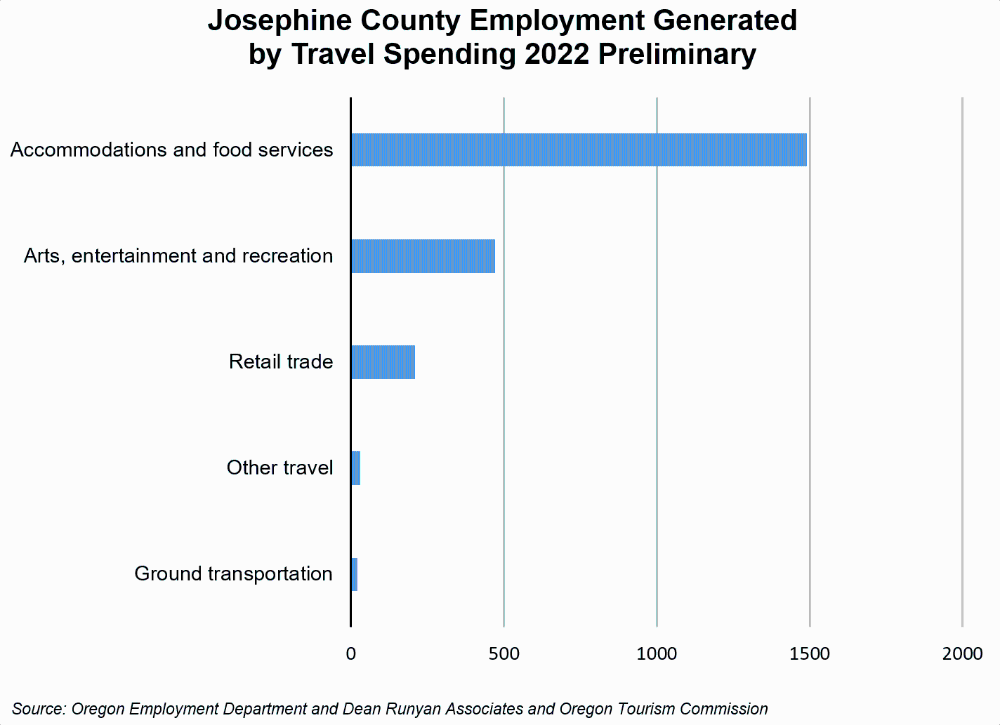
Tax revenue, mostly from lodging taxes and income tax payments attributable to travel industry income of businesses and employees, totaled $31.9 million in 2022. Local tax revenues increased by 12.9% in 2022, while state tax revenue attributable to travel spending rose from about $15.8 million in 2021 to about $18.8 million in 2022, a 19% increase. There were just more than 5.6 million person-night overnight visitor stays in Jackson County in 2022, according to preliminary estimates.
Tax revenue, mostly from lodging taxes and income tax payments attributable to travel industry income of businesses and employees, totaled $7.8 million in 2022. Local tax revenues increased from $1.9 million to $2.0 million in 2022, while state tax revenue attributable to travel spending rose from about $5.1 million in 2021 to about $5.9 million in 2022, a 15.7% increase. There were nearly 2.0 million overnight visitor stays in Josephine County in 2022, according to preliminary estimates, just eclipsing the pre-pandemic 2019 total of about 1,971,000 “person-nights” according to Dean Runyan and Associates data.
While some don’t consider travel and tourism as an “export-oriented” industry, the Dean Runyan Associates report does a nice job of detailing why this sector does fit the criteria of an export-oriented industry, due to the influx of resources that flow into an economy from outside of the region. The travel impact report states the gross domestic product of the travel industry was $6.5 billion in 2022. Overall, the travel industry is one of the three largest export-oriented industries in rural Oregon counties, with the other two being agriculture/food processing and logging/wood products.
For the entire report, see https://industry.traveloregon.com/wp-content/uploads/2023/06/OR_2022_2023-05-24.pdf.
Interactive tables and other Oregon data from the Oregon Tourism Commission: https://industry.traveloregon.com/research/category/all-research/.
By Guy Tauer, Oregon Regional Economist for Coos, Curry, Jackson, and Josephine counties – June 26, 2023 – https://www.qualityinfo.org/-/rogue-valley-travel-impacts-2022?redirect=%2Frogue-valley


Advertisement